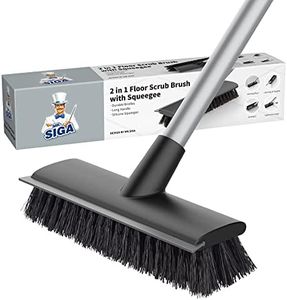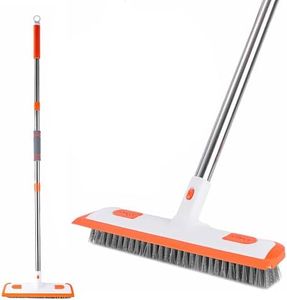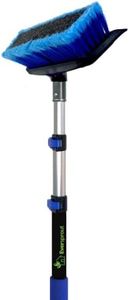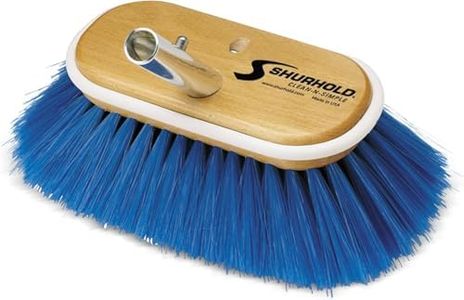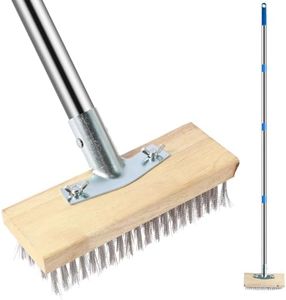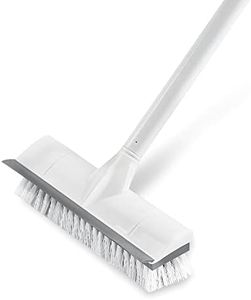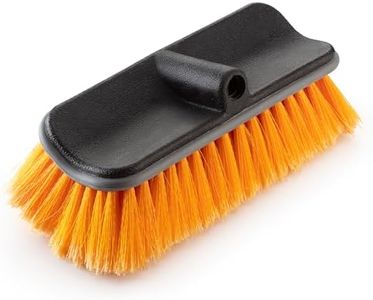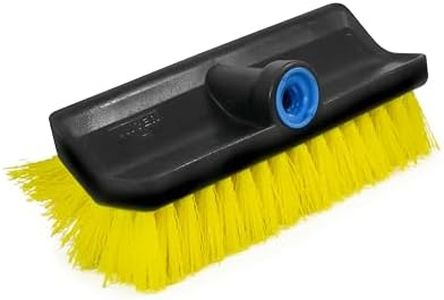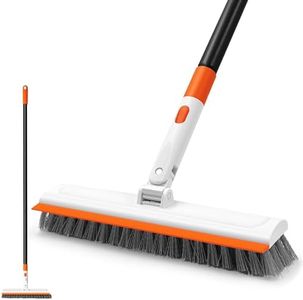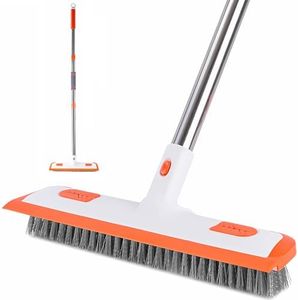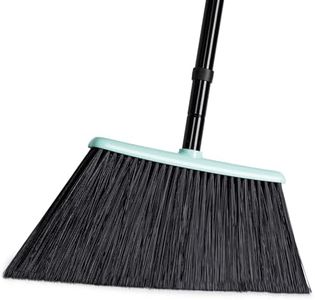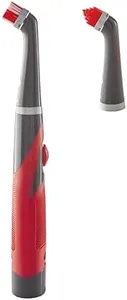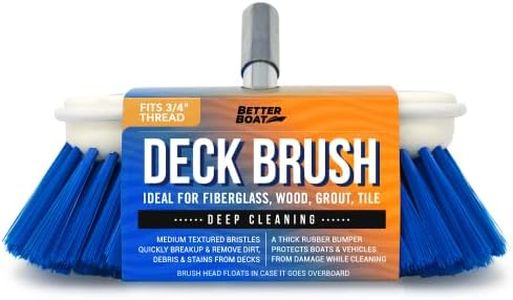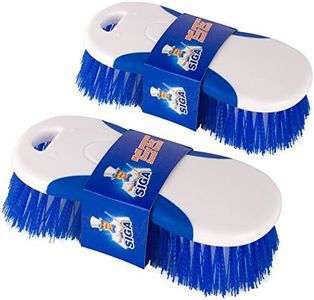We Use CookiesWe use cookies to enhance the security, performance,
functionality and for analytical and promotional activities. By continuing to browse this site you
are agreeing to our privacy policy
10 Best Deck Cleaning Brush
From leading brands and best sellers available on the web.By clicking on a link to a third party's website, log data is shared with that third party.
Buying Guide for the Best Deck Cleaning Brush
When choosing a deck cleaning brush, it's important to understand which features will help you clean your deck efficiently and comfortably. A good deck brush should suit your cleaning needs and the type of deck you have, ensuring that you can scrub away dirt, moss, and mildew without damaging the wood or composite materials. Thinking about the size of your deck, the type of grime you're dealing with, and your own comfort while cleaning will help you make the right choice.Brush Bristle TypeThe bristle type refers to the material and stiffness of the brush’s bristles, which determines how aggressively it will clean your deck. Softer bristles are gentler and suited for delicate surfaces, while stiff bristles are better for scrubbing tough grime. Natural bristles tend to be softer and can hold more cleaning solution, making them ideal for light debris or treated wood decks. Synthetic bristles, like nylon or plastic, are more durable and work well for heavy scrubbing on harder surfaces. Consider the deck material and the kind of dirt you're removing; choose softer bristles for treated or painted wood, and stiffer bristles for raw wood or composite decks with stubborn grime.
Brush Size and ShapeBrush size means the width and surface area covered in one stroke, while the shape can be rectangular, round, or angled. Larger brushes clean big, open areas more efficiently, reducing cleaning time, but may be difficult to maneuver in corners or tight spaces. Smaller or angled brushes offer more control in detailed work, like corners or railings. Think about your deck’s layout: if it’s mostly open, a wide brush might be best; for decks with lots of nooks or built-in benches, a smaller or angled brush could reach all areas more easily.
Handle Length and AdjustabilityHandle length affects how comfortable it is to use the brush, especially for extended periods. Short handles give you more scrubbing power and control for spot cleaning, but longer handles are better for cleaning large areas without bending or kneeling, which can save your back. Some brushes come with telescoping or adjustable handles, letting you switch between different lengths as needed. If you have a large deck or want to avoid strain, opt for a longer or adjustable handle; if you need close control for stubborn spots or railings, a shorter handle will do.
Compatibility with Cleaning SolutionsSome deck brushes are designed to work with specific cleaning solutions or can be attached to garden hoses to dispense water or soap through the bristles. This feature is useful if you plan to use special deck cleaners or want to make cleaning easier by spraying as you scrub. If you expect to tackle tough stains or like multitasking as you clean, a brush with this compatibility can save you time and effort; otherwise, a traditional brush used with a bucket might be sufficient.
Durability and Construction MaterialDurability refers to how well the brush and handle hold up to repeated use and exposure to water, cleaning chemicals, and outdoor conditions. Brushes made from sturdy plastics, treated wood, or rust-resistant metals will last longer and withstand tougher cleaning jobs. If you plan to use the brush regularly or for large decks, choose one made from durable materials to avoid frequent replacement. Lightweight plastic brushes can be easy to maneuver for quick clean-ups, but a heavier, sturdier brush will provide more scrubbing power and longevity for ongoing maintenance.
